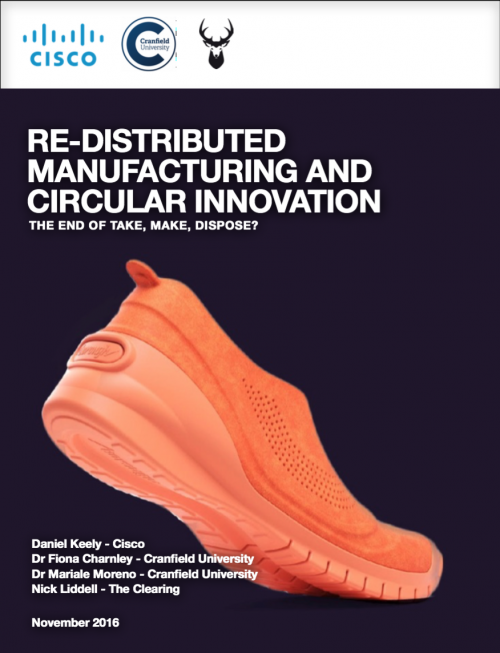
Re-distributed Manufacturing – the End of Take, Make, Dispose? Part 5
3 min read
In my last blog, we took a deep dive into a re-distributed model for the manufacture of sports shoes and how it might work in practice. In the last blog in the series we’ll outline five steps to harnessing the consumer and market changes highlighted in this series and driving circular innovation to create new, profitable business models. Before somebody else does…
#1 – Focus on value:
It’s easy to identify your business with a fixed point on the value chain, but the future will be more dynamic, with both competition and collaboration coming from all sides. To meet consumer demand for highly customised products, you may need to collaborate on an ecommerce site with a retailer who would usually be your customer. At the same time, you may effectively set up in competition by working with a media outlet to offer products via a subscription model.
Stop thinking in terms of fixed chains and processes and instead put customer value at the heart of dynamic networks that can deliver. When you work backwards from customer wants and needs and harness digital technology to deliver on that, virtually any model is possible.
#2 – Become hyperaware:
To overhaul your business model, you need agile IT architectures and hyperaware analytics that connect your business and beyond. But that’s only effective if they are backed up with a willingness to move fast across the business from the top down. Without both of these, you will simply be unable respond to customers in real time, while ensuring quality and uptime.
#3 – No features without benefits:
Design intelligence into your products to boost the opportunities for circular innovation, consumer interaction and downstream commercial application for businesses in other sectors. With adoption of digital technologies becoming increasingly prevalent, customers will come to expect increasing levels of sophistication from products, even if the core function has not changed.
We already expect cars to tell us when they need servicing, printers to tell us when they run out of ink (or simply re-order it), and that is only the start.The industrial applications and business benefits are practically endless when we stop thinking about products in isolation and consider the service aspect of the product lifecycle.
#4 – Establish clear rules of engagement:
The new model will likely see you dealing with new supply chain partners and/or existing ones on different terms. It’s imperative that you define and monetise roles and processes around introduction, referral, production and fulfilment and especially the ongoing customer engagement. This is easier than it sounds when multiple players are involved, many of whom view the consumer as their customer.You may need to rip up your standard contracts and look to other industries for guidance on how to make the new model commercially viable.
It is imperative that the customer journey makes sense and that customers are not bombarded with competing ‘noise’. Allowing customers to nominate preferred communications channels (e.g. Twitter) and being up-front about how data is gathered and acted upon.
#5 – Build in security:
The greater the level of customisation, the greater the volume of data which much be captured. With more collaboration comes more opportunities for data and intellectual property to be compromised. The bigger the data, t he bigger the risk. Security must be built-in from the ground up and not as an afterthought or add-on.
he bigger the risk. Security must be built-in from the ground up and not as an afterthought or add-on.
The new customer journey developed through the Shoe Lab project shows that RdM isn’t just about a new way to manufacture – it has the potential to bring manufacturers closer to their end customers and to revolutionise how people relate to manufactured goods.
The implications stretch far beyond running shoes. And this isn’t a future scenario. All the constituent parts are available now. It just takes someone with the vision to pull them together. Shoe Lab illustrates the proof of concept for a very different model that is just around corner. So, how will your business be impacted?
- Catch the previous blog in this series, which covers the changes that are underway and their impact onindustry
- Download the ‘Re-distributed Manufacturing – the End of Take, Make, Dispose?‘ white paper
- Read more about the ‘Shoe Lab‘ collaboration between Cisco, Cranfield University and The Clearing
- See how Cisco is working with manufacturers to drive digital transformation